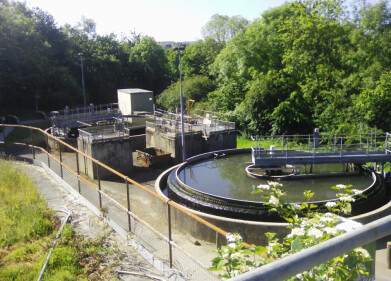-
 Understanding aquifer water contamination is key to ensuring fresh water supplies are maintained
Understanding aquifer water contamination is key to ensuring fresh water supplies are maintained
Water/Wastewater
Research highlights groundwater contamination
Oct 01 2013
A key factor in understanding how the water quality of aquifers is affected could soon be understood, thanks to new research. Geologists have been able to identify how tungsten metal is able to leach from sediment into the water with aquifers, potentially contaminating groundwater.
Tungsten is a natural metal substance and has a number of uses in industry, including being used for drill bits and incandescent light bulbs. If it is able to contaminate groundwater sources, it can cause problems with human health. Tungsten is not toxic to humans or the environment, but consuming large quantities can be fatal and lead to a number of illnesses. Over the last few years, theories have arisen that it could be linked to a spate of illnesses within small geographical areas.
Researchers from the University of Texas, Kansas State University and Tulane University have found that several factors could increase the likelihood of tungsten contaminating groundwater. According to the research, the amount of oxidised particles and oxygen that is present within the sediment surrounding the water, as well as the water itself, could affect how much tungsten leaches into the groundwater. The water's PH level could also be a factor in this process.
The research, titled 'Controls on tungsten concentrations in groundwater flow systems: The role of absorption, aquifer sediment FE (III) oxide/oxyhydroxide content and thiotungstate formation', was published in the journal 'Chemical Geology'. It could be an important discovery into maintaining the water quality in aquifers around the world, which could benefit human health and the overall environment.
Researchers looked at sites in Nevada, Arizona and Kansas that had been identified in previous studies as having natural concentrations of tungsten. Residents at the sites in Nevada and Arizona were found in 2002 to have levels of tungsten in their urine that were above the 95th percentile, during a Centers for Disease Controls investigation. The sites were selected due to the measurable levels of the metal.
Both sediment and groundwater samples were analysed and it was found that oxyhydroxide and iron oxide levels can affect the amount of tungsten found in groundwater. The researchers concluded that lower levels of these substances resulted in high levels of the metal being present.
Digital Edition
AET 28.3 September 2024
September 2024
Business News - ENVEA announces acquisition of APAQ Group - SICK and Endress+Hauser sign strategic partnership - Efforts to curb gas flaring intensify amid environmental concerns Air Monito...
View all digital editions
Events
Oct 05 2024 New Orleans, LA., USA
Oct 07 2024 Cape Town, South Africa
13th St Petersburg International Gas Forum
Oct 08 2024 St. Petersburg, Russia
Oct 08 2024 Kuala Lumpur, Malaysia
Oct 09 2024 Birmingham, UK

















